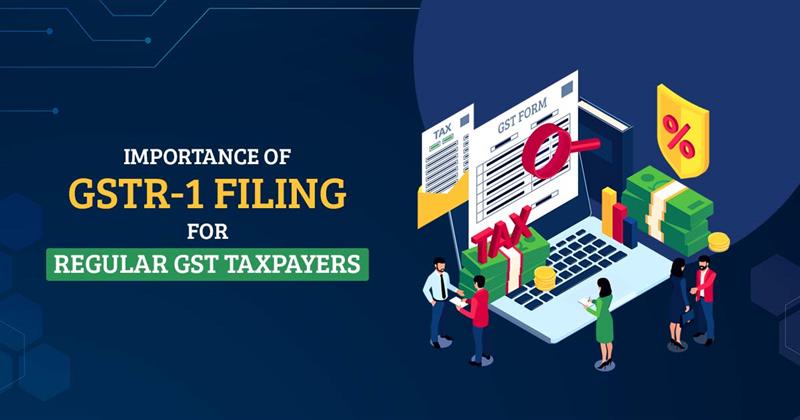Importance of GSTR 1 Retrun Filing for Regular GST Taxpayers

If you own a business in India, you're likely familiar with the Goods and Services Tax, commonly known as GST. One important requirement under this system is submitting your GST returns on time. One of the main forms you’ll need to file is called GSTR 1, which is crucial for following GST rules. In this article, we’ll simplify what the GSTR-1 form is and explain the deadlines for regular taxpayers.
The due dates for filing GSTR-1 forms depend on how much money your business makes. If your business has sales of up to Rs 5 crore, you can file your returns every three months using a special scheme called QRMP. These returns are due by the 13th of the month following each quarter. For businesses with annual earnings exceeding Rs 1.5 crore, you will need to submit your GSTR 1 forms by the 11th of the month after each month. Timely submission helps ensure that you comply with tax rules and avoid any penalties.
Understanding the Importance of Filing GST Returns
If you run a registered business, it's important to file GST returns. These are documents that tell the tax authorities about your business's income and expenses. Basically, if your business is registered for Goods and Services Tax (GST), you need to keep track of what you earn and spend, and share that information with the tax office.
One key form you'll need to fill out is called GSTR 1. In this form, you provide details about the goods and services you sell. This information helps the tax authorities figure out how much tax you owe. The returns include details about what you've sold, what you've purchased, and the GST you've collected and paid.
Filing these returns regularly is necessary, and how often you do so depends on your business situation, either every month, every three months, or once a year. There are different types of GST return forms, but you'll only need to complete the ones that apply to your business.
What Does GSTR-1 Mean?
GSTR-1 is a form that businesses registered for GST need to fill out and submit every month or quarter, based on how much money they make in a year. This form is important because it requires businesses to provide detailed information about all the goods and services they sell. The reason GSTR-1 matters so much is that it helps buyers claim back some of the tax they paid, but only if the seller submits this form accurately and on time.
Even if a business didn’t sell anything in a particular month, they still have to submit a form called a NIL GSTR-1 to show there were no sales. On the other hand, if a business has decided to join a simpler tax scheme known as the composition scheme, it shouldn't file GSTR-1. Instead, they need to make their payments using a different form called CMP-08.
Overview of GSTR 1 Filing Form Deadlines for FY
The due date for filing GSTR 1 forms is defined by how much money your business earns. If your business makes up to Rs. 5 crore, you have the option to file your returns every three months under a special program known as QRMP. If you choose this route, you need to submit your returns by the 13th of the month after each quarter ends. For businesses that earn more than Rs. 5 crore, or if you decide not to use the QRMP program, you have to file your GSTR-1 form every month. In this case, the deadline is the 11th of the month after the one you're filing for.
In summary:
Businesses that make more than Rs. 5 crore need to file their tax returns every month, and they must do this by the 11th day of each month.
Businesses that earn up to Rs. 5 crore can choose to file their returns every three months instead. They need to submit these returns by the 13th day of the month following each quarter.
Who Needs to File GSTR-1?
Everyone who is registered for Goods and Services Tax (GST) must file GSTR-1, regardless of whether they had any sales or transactions during that time. If a business has no transactions to report (often called a "nil" return), they can even submit their GSTR-1 through a simple SMS since July 2020.
However, there are some specific groups of registered individuals or businesses that do not need to file GSTR-1.
Read Also: E-Invoicing by Gen GST Software or Manually: Which is Better
These include:
Businesses known as Input Service Distributors.
Those who are registered under the Composition Scheme, which is a simpler tax option for small businesses.
Online service providers who need to pay tax directly under certain regulations.
Non-resident businesses that sell goods or services in India.
Taxpayers who collect Tax Collected at Source (TCS)
Taxpayers who deduct Tax Deducted at Source (TDS)
